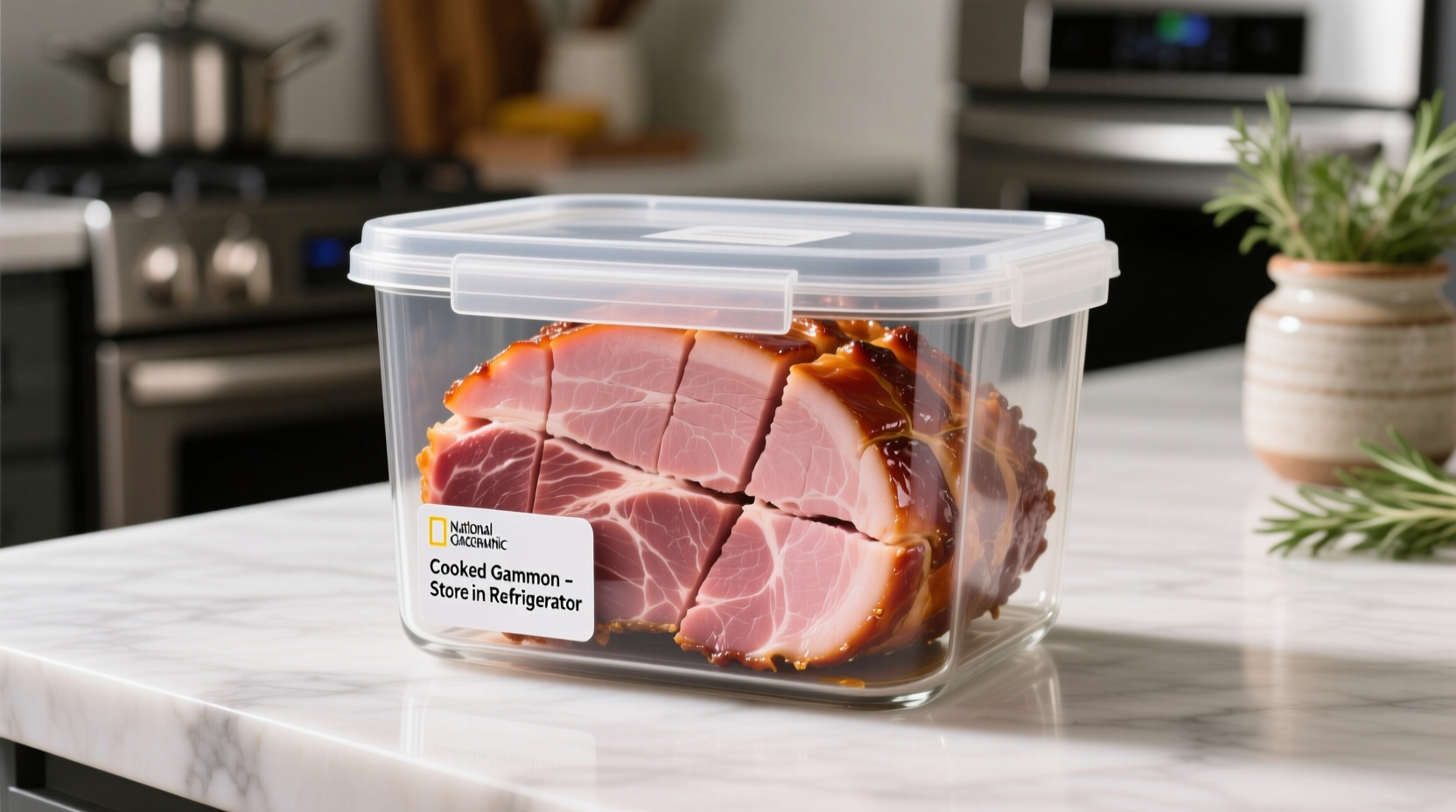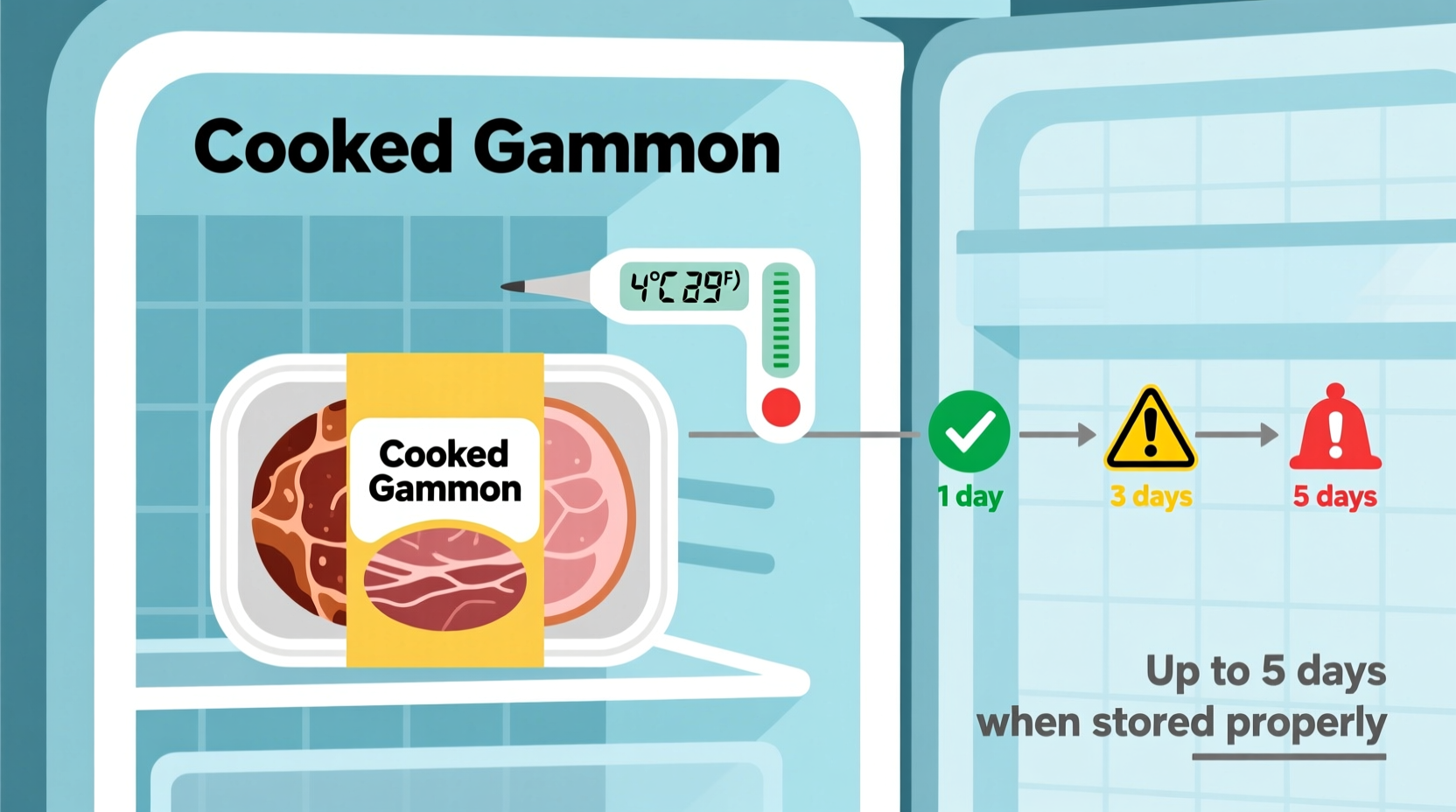Knowing exactly how long your cooked gammon remains safe to eat isn't just about avoiding waste—it's critical for protecting your family's health. As someone who's worked in professional kitchens for over 15 years, I've seen how improper meat storage leads to unnecessary food poisoning cases every year. This guide delivers precise, science-backed storage guidelines so you can enjoy your gammon meals with complete confidence.
The Science-Backed Gammon Shelf Life Timeline
Understanding the exact window for cooked gammon safety requires knowing how bacteria develops in cooked meats. The USDA Food Safety and Inspection Service clearly states that all cooked meats, including gammon, remain safe for consumption for 3-4 days when refrigerated properly.
| Storage Method | Temperature | Safe Duration | Quality Considerations |
|---|---|---|---|
| Refrigerator (properly stored) | 40°F (4°C) or below | 3-4 days | Best flavor and texture |
| Refrigerator (improperly stored) | Above 40°F (4°C) | 1-2 days | Rapid quality deterioration |
| Freezer | 0°F (-18°C) or below | 1-2 months | Best within 1 month for optimal quality |
This authoritative timeframe comes directly from the USDA Food Safety and Inspection Service, which monitors foodborne illness data and establishes evidence-based storage recommendations. Their research shows that pathogenic bacteria like Staphylococcus aureus and Listeria monocytogenes begin multiplying rapidly after the 4-day mark in refrigerated cooked meats.
Maximizing Your Gammon's Freshness: Step-by-Step Storage Protocol
Simply placing your cooked gammon in the fridge isn't enough—you need to follow these professional storage techniques to hit that full 4-day safety window:
- Cool rapidly: Divide large portions into smaller containers to cool faster (within 2 hours of cooking)
- Seal properly: Use airtight containers or heavy-duty aluminum foil—never leave gammon exposed
- Temperature check: Verify your refrigerator maintains 40°F (4°C) or below with an independent thermometer
- Strategic placement: Store in the coldest part of your refrigerator (usually the back, bottom shelf)
- Label everything: Note the storage date on containers using waterproof markers
Professional kitchens follow these same protocols to maintain food safety compliance. The critical factor is maintaining that consistent cold temperature—fluctuations dramatically shorten safe storage time.

Recognizing Spoilage: Your Safety Checklist
Don't rely solely on the calendar—always inspect your gammon before consuming. Here's what to look for at each stage:
Day 1-2: Peak Freshness
Meat maintains its original pink color with slight translucency. Texture remains firm but moist. Aroma is mildly savory with no off-notes.
Day 3: Approaching Limit
Color may begin fading slightly. Surface might feel tacky when touched. Aroma remains pleasant but less pronounced.
Day 4+: Potential Danger Zone
- Visual warning: Gray or greenish discoloration, especially around edges
- Texture change: Slimy film on surface that doesn't wash off
- Odor indicator: Sour, ammonia-like, or distinctly unpleasant smell
- Mold presence: Any visible fuzzy growth (white, green, or black)
If you notice any of these warning signs, discard the gammon immediately. The Food Standards Agency (UK) emphasizes that "when in doubt, throw it out" is the only safe approach with potentially spoiled meats.
Freezing: Extending Gammon's Life Safely
When you can't finish your gammon within 4 days, freezing provides a safe alternative:
- Portion into meal-sized servings before freezing
- Use freezer-safe containers or vacuum sealing for best results
- Remove as much air as possible to prevent freezer burn
- Label with contents and date (consume within 1-2 months for best quality)
- Thaw overnight in the refrigerator—never at room temperature
Research from the National Center for Home Food Preservation confirms that properly frozen cooked gammon maintains safety indefinitely, though quality peaks within the first month. The key is maintaining consistent 0°F (-18°C) temperatures without fluctuations.
Reheating for Optimal Safety and Flavor
When preparing stored gammon, follow these reheating protocols:
- Always reheat to an internal temperature of 165°F (74°C)
- Use a food thermometer to verify temperature in multiple spots
- Reheat only the portion you plan to eat immediately
- Avoid multiple reheating cycles which degrade quality and safety
For best results, add a splash of broth or water during reheating to restore moisture lost during storage. The Food Standards Agency recommends consuming reheated gammon within 2 hours of reaching proper temperature.
Frequently Asked Questions
Can I eat cooked gammon after 5 days in the fridge?
No, cooked gammon should not be consumed after 5 days in the refrigerator. The USDA Food Safety and Inspection Service recommends discarding cooked meats after 3-4 days to prevent potential foodborne illness from bacterial growth.
How can I tell if my cooked gammon has gone bad?
Signs of spoiled cooked gammon include gray or greenish discoloration, a slimy surface film, sour or ammonia-like odors, and visible mold growth. If you notice any of these warning signs, discard the gammon immediately regardless of storage time.
Does the cooking method affect how long gammon lasts in the fridge?
The cooking method doesn't significantly change the 3-4 day safety window for refrigerated cooked gammon. Whether boiled, roasted, or baked, all cooked gammon follows the same USDA food safety guidelines for refrigerated storage of cooked meats.
Can I freeze cooked gammon that's been in the fridge for 3 days?
Yes, you can freeze cooked gammon that's been refrigerated for 3 days. This effectively resets the clock, allowing you to safely store it in the freezer for 1-2 months. Just ensure proper wrapping to prevent freezer burn and label with the new freezing date.











 浙公网安备
33010002000092号
浙公网安备
33010002000092号 浙B2-20120091-4
浙B2-20120091-4